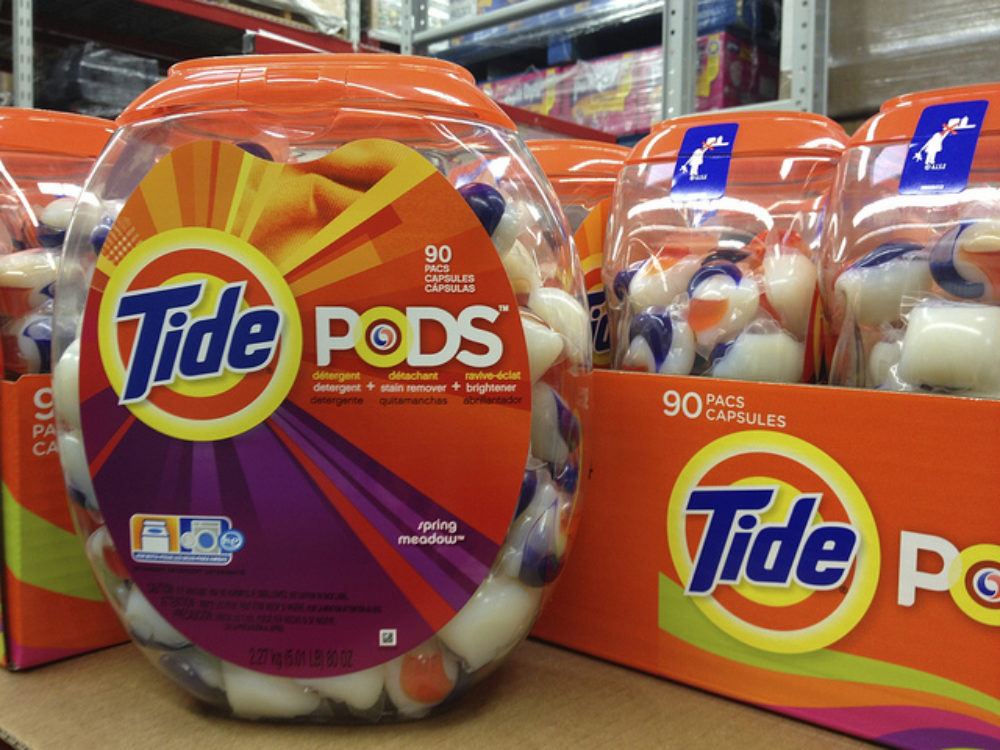Laundry Detergent Packets Require Packaging Safeguards: Consumer Reports

Amid continuing reports of laundry detergent poisoning from single-load packets, Consumer Reports is calling for new packaging standards to help protect children and reduce the risk that the brightly colored pods may be placed into their mouths.
In recent years, there have been thousands of reports involving problems and injuries associated with laundry detergent packets sold by several different manufacturers, including Tide Pods, All Mighty Pacs, Purex UltraPacks and others.
The single-load packs are designed to be dropped into the washing machine to provide the appropriate amount of laundry detergent. The gel packs are sold in bright colors and have been packaged in a way that makes them appear similar to a candy or teething toy for many young children and those with mental disabilities.

Did You Know?
Millions of Philips CPAP Machines Recalled
Philips DreamStation, CPAP and BiPAP machines sold in recent years may pose a risk of cancer, lung damage and other injuries.
Learn MoreGiven the concentrated nature of the laundry detergent, ingesting the liquid may cause severe and potentially life-threatening injuries, often requiring immediate hospitalization.
In a recent article by Consumer Reports, the group joins other consumer advocates in criticizing the current safety standards set by ASTM International, which is a non-profit organization that introduced voluntary standards designed to help make laundry detergent packets safer for children.
The ASTM standards call for child-resistant outer packaging, such as the plastic containers or tubs to hold the pods. It also calls for clear warning labels on the package.
Consumer Reports calls these standards “positive changes,” but says other stricter protections are needed, especially since many children gain access to the loose pods that have been removed from their original storage container or tub.
Reports of Problems with Laundry Detergent Packets
Given the large number of poison reports involving laundry detergent packets, the issue has become one of the main focuses of the American Association of Poison Control Centers in recent years.
In 2014, the American Association of Poison Control Centers received more than 12,000 reports of problems with laundry detergent pods. Some injuries are more severe and result in seizures, vomiting and respiratory arrest.
About 30 children are exposed on a daily basis causing hundreds of hospital visits and injuries.
So far, there has been at least one death linked to ingestion of a laundry detergent pod, involving a 7 month old boy from Florida who chewed on a laundry pod that was left out on the bed while he was sleeping.
The CPSC first began to voice concerns about children suffering laundry detergent poisoning from the small packs in 2012, when warnings were issued that urged caregivers to be aware of the risks and to store the products out of sight and reach of children.
In response to substantial criticism over the brightly colored Tide Pod packaging, Proctor & Gamble did agree to make several changes to their product packages in 2013. The manufacturer altered the containers to an opaque material, instead of a clear plastic, to deter children from seeing the brightly colored product and trying to get inside the container.
Packaging Standards for Laundry Packs
The main criticism voiced by Consumer Reports about the ASTM standards involve the potential failure of the outer-packaging deterrents. Consumer Reports is calling for requirements that each pod be individually wrapped to further reduce the risk accidental ingestion by children.
“Several varieties of single-use dishwasher detergent, including Finish Powerball Tabs, use this packaging method, so we know it’s feasible,” said Consumer Reports in a statement concerning the issue.
In response to the thousands of children affected by laundry detergent pod poisoning, the Detergent Poisoning and Child Safety (PACS) Act 2015 was introduced earlier this year, to establish safety regulations surrounding single-use pods and to reduce the risk posed to children.
Consumer Reports expressed their continued support for the PACS Act which was introduced to the House and Senate earlier this year.
Consumer Reports said it would support the ASTM efforts if the organization would fully adopt the requirements that focus on the burst strength of the film encasing the liquid covering each pod and the taste of the film. That way, if a child has access to a laundry pod, the chance of exposure or ingestion would be greatly reduced.
These requirements have already been adopted by the European Union.
Get more articles like this sent directly to your inbox.
"*" indicates required fields




0 Comments